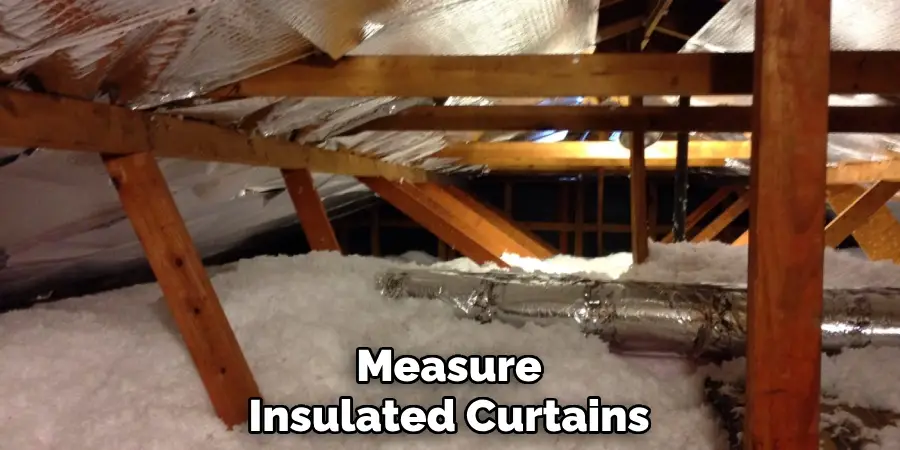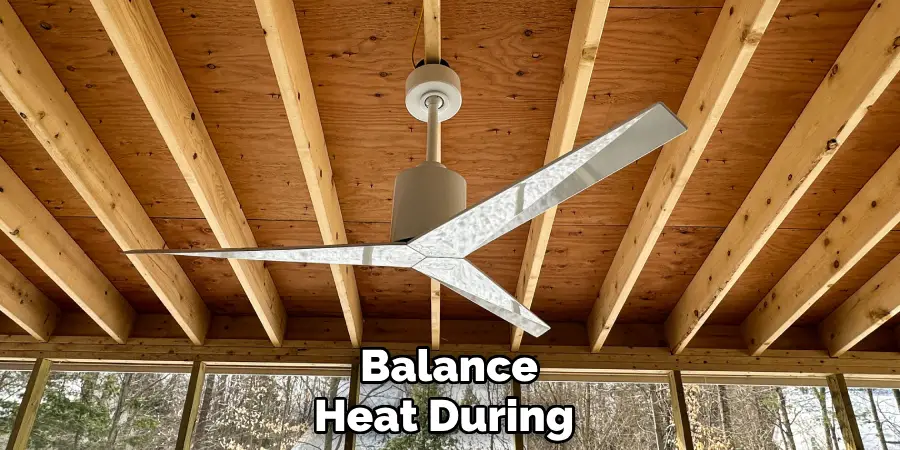Balancing heat in a two-story house during winter can be challenging, as warm air naturally rises, leaving the upper floors cozy while the ground level can remain uncomfortably chilly.
Uneven heating not only affects comfort but can also lead to higher energy bills as the heating system strains to maintain a consistent temperature. Identifying and implementing effective strategies is key to ensuring warmth and energy efficiency throughout the home.
This guide on how to balance heat in a two-story house in winter will explore various methods and tips to help homeowners achieve an equitable distribution of heat, creating a more pleasant and cost-effective living environment during the cold season.

Why is Heat Balancing Important?
Before we dive into the methods of balancing heat in a two-story house, let’s first understand why this is an important issue to address.
Uneven heating can cause discomfort and inconvenience for residents, leading to complaints and potential health issues. Inadequate heating on the ground level can also lead to pipes freezing and bursting, resulting in costly repairs.
Additionally, uneven heat distribution means that your heating system is working harder to maintain a consistent temperature throughout the house. This not only increases energy consumption but also puts unnecessary strain on the system, potentially shortening its lifespan. By achieving a balanced heat distribution, you can save money on energy bills and extend the life of your heating system.
Needed Materials
- A Tape Measure
- Weatherstripping or Caulk
- Window Insulating Film
- Insulated Curtains or Blinds
- Space Heaters (Optional)

8 Methods on How to Balance Heat in a Two-story House in Winter
Step 1: Adjusting Your Thermostat
The first method to consider when balancing heat in a two-story house is adjusting your thermostat settings. Most thermostats are located on the lower level of homes, which can lead to inaccuracies in temperature regulation since the thermostat might shut off the heating system once the desired temperature is reached downstairs while leaving upper floors warmer. To counter this, consider setting the thermostat a few degrees higher than usual, as this will help push more warm air to the lower level.
Additionally, using a programmable thermostat can help by allowing you to create different heating schedules throughout the day, ensuring a consistent climate on both levels. For more advanced control, a zoning system can be employed, which involves setting up separate thermostats for each floor, allowing for precise adjustments to maintain comfortable temperatures across the house.
Step 2: Use Ceiling Fans
Ceiling fans are not just for cooling in the summer; they can also be used to balance heat during winter. Switching ceiling fan blades to rotate clockwise at a low speed will help push warm air down from the upper levels, creating a more even distribution of heat throughout the house.
You can also strategically place floor or tabletop fans in areas where heat may be trapped, such as near the staircase or in hallways, to circulate warm air and prevent it from rising to the upper level.

Step 3: Inspect and Seal Air Leaks
Air leaks are one of the major culprits of uneven heating. Cool air can seep into your home through cracks around doors and windows, leading to a drop in temperature on the lower floors. Inspecting for air leaks and sealing them with weatherstripping or caulk is an effective way to maintain heat balance throughout your house.
Another option is to install window insulating film over drafty windows, which helps keep cold air out and warm air in.
Step 4: Utilize Insulated Curtains or Blinds
Investing in insulated curtains or blinds can make a significant difference in heat distribution throughout your home. These window treatments create an added layer of insulation, preventing cold air from entering while also keeping warmth inside. For optimal results, keep the curtains closed during the night and open them during the day to let natural sunlight warm up the house.
The added bonus of insulated curtains or blinds is that they also help with soundproofing, making them a worthwhile investment for any homeowner.
Step 5: Rearrange Furniture
Believe it or not, furniture placement can affect heat distribution in a two-story house. Large pieces of furniture near vents or radiators can block warm air from circulating properly, leading to uneven heating. Try rearranging furniture to allow for better airflow and an even distribution of heat throughout the house.
It’s also important to keep furniture away from exterior walls, as these are typically colder and can affect the temperature of the room.

Step 6: Utilize Space Heaters (Optional)
If you have a particularly cold area in your home that is not adequately heated by the central system, consider using a space heater. These portable heaters can be placed in specific rooms or areas to provide additional warmth, making them a great option for balance heating in a two-story house. However, it’s essential to use caution when using space heaters and never leave them unattended.
The downside to using space heaters is that they do consume additional energy, so it’s best to use them sparingly and only in areas where they are necessary.
Step 7: Check Your Ductwork
Leaky or poorly insulated ductwork can also cause uneven heating in a two-story house. It’s important to inspect your ducts for any damage or leaks and repair them as needed. Additionally, consider insulating your ducts to prevent heat loss while the warm air travels throughout your home.
The more efficiently your ductwork is functioning, the better heat balance you will have in your two-story house.

Step 8: Consider Upgrading Your Heating System
If all else fails, it may be time to consider upgrading your heating system. Modern HVAC systems are designed for energy efficiency and can provide a more even distribution of heat throughout a two-story house. Consult with a professional to determine the best heating system for your home and budget.
Following these methods on how to balance heat in a two-story house in winter can help you achieve a more balanced heat distribution in your two-story house, providing comfort and cost-saving benefits. Remember to regularly maintain your heating system and follow these steps for optimal results. Stay warm this winter!
Additional Tips
Curtain Placement and Use:
Make sure to use light-colored curtains during the day to reflect sunlight while keeping the room warm. At night, switch to heavy, dark curtains to provide extra insulation.
Door Draft Stoppers:
Place door draft stoppers at the base of your home’s doors to prevent unwanted cold air from seeping in under the doors, particularly at entry points.
Regular Maintenance:
Schedule regular maintenance checks for your HVAC system to ensure it is performing efficiently. This includes changing filters and cleaning ducts, which can improve airflow and heat distribution.
Smart Thermostats:
Consider upgrading to a smart thermostat that can automatically adjust temperature settings based on your daily routine, providing a more consistent indoor climate and saving energy costs.
Heat Sources:
Avoid placing thermostats near heat sources such as radiators or sunny windows, as this can affect the thermostat’s ability to accurately gauge the indoor temperature, leading to inefficient heating.
Implementing these additional tips can further enhance the comfort of your two-story home in winter, ensuring every room remains warm and inviting while optimizing energy efficiency.
Frequently Asked Questions
Q: Why is My Upstairs Warmer Than the Downstairs in Winter?
A: This could be due to several factors, including warm air rising, inadequate insulation, or an imbalanced heating system. It’s important to address these issues to achieve a more comfortable and evenly heated home.
Q: Can I Just Close the Vents on the Upper Level to Redirect Heat?
A: This is not recommended as it can cause strain on your heating system and lead to other issues such as air pressure imbalances. Instead, try adjusting thermostat settings or using ceiling fans for better heat distribution.
Q: How Often Should I Inspect My Heating System?
A: It’s recommended to have your heating system inspected at least once a year by a professional. Regular maintenance can help identify and address any issues before they become major problems.
Q: Is it Expensive to Upgrade my Heating System?
A: The cost of upgrading your heating system will vary depending on the type and size of your home, as well as the specific system you choose. However, investing in a modern and efficient system can save money in the long run through lower energy bills.
Q: Are Space Heaters Safe to Use?
A: It’s important to use caution when using space heaters and never leave them unattended. Make sure to follow all safety instructions and keep them away from any flammable objects. Additionally, consider investing in a space heater with safety features such as automatic shut-off if it tips over.
Conclusion
Balancing heat in a two-story house during winter is crucial for maintaining comfort and reducing energy costs. By implementing these methods on how to balance heat in a two-story house in winter, you can achieve a more even distribution of heat throughout your home, ensuring a cozy and comfortable environment for you and your family.
Remember to regularly maintain your heating system and make adjustments as needed for optimal results. Stay warm this winter!
About
Angela is the chief editor of Indoorense. She began her career as an interior designer before applying her strategic and creative passion to lifestyle and home.
She has close to 15 years of experience in creative writing and online content strategy for housekeeping and cleaning,home decorations as well as other efforts.
She loves her job and has the privilege of working with an extraordinary team. She lives with her husband, two sons, and daughter in Petersburg. When she’s not busy working she spent time with her family.

